Welcome, fellow explorers, to a delightful journey through the exotic and vibrant realm of fruits! In our daily quest for nourishment, we often encounter the familiar faces of apples, bananas, and oranges. But what about the hidden gems that hail from far-off lands, boasting unique flavours, textures, and colours?
In this captivating adventure, we’re turning our attention to 20 exotic fruit Names that might just redefine your fruit bowl. From the spiky allure of dragon fruit to the mysterious aroma of durian, each of these fruits tells a story of its origin and cultural significance. Join us as we unravel the names of these treasures, both in the global language of English and the rich tapestry of Hindi.
20 Fruits names in English and hindi
| Serial Number | Image | English Fruits Name | Hindi Fruits Name |
| 1 |  | Dragon Fruit | ड्रैगन फ्रूट |
| 2 | 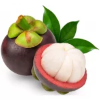 | Mangosteen | मैंगोस्टीन |
| 3 | 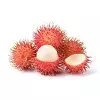 | Rambutan | राम्बुटान |
| 4 |  | Lychee | लीची |
| 5 | 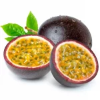 | Passion Fruit | पैशन फ्रूट |
| 6 | 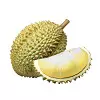 | Durian | ड्यूरियन |
| 7 |  | Jabuticaba | जैबुटिकाबा |
| 8 |  | Mangrove Apple | सुपारी |
| 9 | 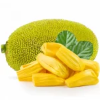 | Jackfruit | कटहल |
| 10 |  | Salak | सैलाक |
| 11 |  | Buddha’s Hand | बुड्डा का हाथ |
| 12 |  | Sapodilla | चिकू |
| 13 | 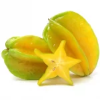 | Carambola (Star Fruit) | कमरख (स्टार फ्रूट) |
| 14 | 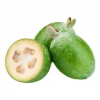 | Feijoa | फीजोआ |
| 15 | 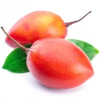 | Tamarillo | टैमरिलो |
| 16 |  | Soursop | शरीफा |
| 17 |  | Horned Melon | हॉर्न्ड मेलन |
| 18 | 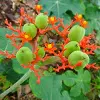 | Buddha’s Belly | बुड्डा की पेटी |
| 19 | 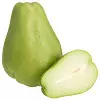 | Chayote | चायोते |
| 20 |  | Physalis (Cape Gooseberry) | फिसालिस (केप गूसबेरी) |
Explanation of 10 fruits
1. Dragon Fruit:
- Appearance: Dragon fruit, also known as pitaya, has a vibrant pink or yellow outer skin with green scales.
- Flavour: The flesh is mildly sweet with a texture reminiscent of kiwi.
- Health Benefits: Rich in antioxidants, vitamin C, fibre, and beneficial plant compounds.
2. Mangosteen:
- Appearance: Mangosteen has a thick, purple rind and juicy, segmented white flesh.
- Flavour: Sweet and tangy, with a unique combination of flavours reminiscent of citrus and peach.
- Health Benefits: High in antioxidants and xanthones, which may have anti-inflammatory properties.
3. Rambutan:
- Appearance: Rambutan is a tropical fruit with hairy, red or yellow skin.
- Flavor: Sweet and juicy, similar to lychee, with a mildly acidic taste.
- Health Benefits: Contains vitamins C and A, as well as iron and fibre.
4. Lychee:
- Appearance: Lychee has rough, pinkish-red outer skin and translucent, white, or pinkish flesh.
- Flavour: Sweet and floral, with a fragrant aroma.
- Health Benefits: High in vitamin C, vitamin B6, niacin, riboflavin, folate, copper, potassium, phosphorus, magnesium, manganese, and antioxidants.
5. Passion Fruit:
- Appearance: Passion fruit has a tough outer rind and contains juicy, seed-filled pulp.
- Flavour: Sweet and tart, with a tropical and slightly floral taste.
- Health Benefits: Rich in dietary fibre, vitamins A and C, and plant compounds with potential health benefits.
6. Durian:
- Appearance: Durian is a large fruit with a thorn-covered husk and custard-like, creamy flesh.
- Flavour: Strong, distinct odour; the taste is a combination of sweet and savoury.
- Health Benefits: Good source of energy, rich in dietary fibre, and contains various vitamins and minerals.
7. Jabuticaba:
- Appearance: Jabuticaba is a grape-like fruit that grows directly on the trunk of the tree.
- Flavour: Sweet and tart, with a taste resembling a combination of grapes and lychee.
- Health Benefits: Packed with antioxidants, vitamin C, and various essential nutrients.
8. Mangrove Apple (Supari):
- Appearance: The mangrove apple has a woody outer shell and a creamy, custard-like inner flesh.
- Flavour: Sweet and aromatic, with a taste resembling a combination of apple and custard.
- Health Benefits: Contains vitamins, minerals, and antioxidants.
9. Jackfruit:
- Appearance: Jackfruit is a large, greenish fruit with spiky skin and yellow, fibrous flesh.
- Flavor: Mildly sweet and has a meaty texture, often used as a meat substitute in vegetarian dishes.
- Health Benefits: Rich in dietary fibre, vitamins, and minerals.
10. Salak (Snake Fruit):
- Appearance: Salak has reddish-brown scaly skin resembling snake scales.
- Flavour: Sweet and tangy, with a crunchy texture.
- Health Benefits: Contains essential nutrients, including vitamin C, potassium, and fiber.
Exotic Fruits Unveiled: A Flavorful Odyssey to Boost Your Health and Palate
1. Rich Nutrient Profiles:
Exotic fruits often boast unique nutrient compositions, providing a diverse range of vitamins, minerals, and antioxidants. Incorporating these fruits into your diet can contribute to overall health and well-being.
2. Diverse Flavors for Culinary Creativity:
Expand your palate by experimenting with the diverse flavours of exotic fruits. From the sweet and tangy notes of dragon fruit to the creamy richness of durian, these fruits offer a culinary adventure that can inspire creative recipes and refreshing combinations.
3. Antioxidant Powerhouses:
Many exotic fruits are packed with antioxidants that help combat oxidative stress in the body. Antioxidants play a crucial role in supporting overall health, including reducing the risk of chronic diseases.
4. Digestive Health:
Fruits, in general, are known for their fibre content, and exotic fruits are no exception. Fibre is essential for digestive health, promoting regular bowel movements and supporting a healthy gut microbiome.
5. Immune System Support:
Some exotic fruits, such as guava and kiwi, are rich in vitamin C, which is known for its immune-boosting properties. Including a variety of exotic fruits in your diet can contribute to a well-rounded intake of essential vitamins and minerals.
6. Natural Hydration:
Many exotic fruits have high water content, contributing to hydration. Staying adequately hydrated is vital for various bodily functions, including skin health, temperature regulation, and nutrient transport.
7. Potential Anti-Inflammatory Effects:
Certain compounds found in exotic fruits may have anti-inflammatory properties. A diet rich in anti-inflammatory foods can help reduce inflammation in the body and may contribute to the prevention of chronic diseases.
8. Novel Culinary Experiences:
Beyond the nutritional benefits, incorporating exotic fruits into your diet allows you to explore new and exciting culinary experiences. Trying different fruits can make mealtime more enjoyable and encourage a varied and balanced diet.
9. Sustainable and Environmentally Friendly:
Exploring exotic fruits may lead to a greater appreciation for sustainable and environmentally friendly agricultural practices. Supporting a diverse range of fruits promotes biodiversity and sustainable farming methods.
Yes, many exotic fruits can be grown both at home and outdoors, depending on the specific fruit and the climate of your region. Here are a few examples of exotic fruits that can be grown in various settings:
Homegrown Exotic Delights: Cultivating a Tropical Paradise in Your Own Space
Exotic Fruits Suitable for Home Growing:
Unlock the joy of homegrown exotic fruits! Discover a selection of tropical delights perfect for your garden or balcony. From compact jackfruit to container-friendly dragon fruit, cultivate a slice of paradise at home. Explore our guide to bring the exotic to your doorstep
1. Dragon Fruit (Pitaya):
- Growing Environment: Can be grown in containers indoors or in gardens in warm climates.
- Tips: Requires well-draining soil and a support structure for the climbing stems.
2. Passion Fruit:
- Growing Environment: Suitable for both indoor and outdoor cultivation in containers or hanging baskets.
- Tips: Requires a sunny location and well-draining soil.
3. Lychee:
- Growing Environment: Can be grown in pots indoors or in gardens in subtropical climates.
- Tips: Requires well-draining soil and protection from frost.
4. Fig (Some Varieties):
- Growing Environment: Suitable for both indoor and outdoor cultivation, especially in containers.
- Tips: Requires well-draining soil and adequate sunlight.
Exotic Fruits Suitable for Outdoor Growing:
1. Mango:
- Growing Environment: Thrives in tropical and subtropical climates.
- Tips: Requires a sunny location, well-draining soil, and protection from frost when young.
2. Banana:
- Growing Environment: Suitable for warm climates with well-draining soil.
- Tips: Requires ample sunlight and protection from strong winds.
3. Avocado:
- Growing Environment: Best suited for subtropical and tropical climates.
- Tips: Requires well-draining soil and protection from frost.
4. Papaya:
- Growing Environment: Suitable for tropical and subtropical climates.
- Tips: Requires well-draining soil and protection from strong winds.
5. Guava:
- Growing Environment: Grows well in tropical and subtropical regions.
- Tips: Tolerant of various soil types but prefers well-draining soil.
Harvests of Paradise: A Guide to the Seasons of Exotic Fruits
The availability of exotic fruits can vary depending on the region and climate. However, many exotic fruits are associated with tropical climates, and their seasons might align with specific weather patterns. Here’s a general overview:
1. Year-Round Exotics: Some exotic fruits, like bananas and pineapples, are available year-round in many regions due to their adaptability to different climates and continuous harvest cycles.
2. Summer: Mango: The summer season is often synonymous with mangoes, known as the “king of fruits.” Various varieties of mangoes are available during the summer months.
3. Late Summer to Fall: Lychee: Late spring to early summer is the prime season for lychee in tropical regions. Rambutan: Similar to lychee, rambutan is also often in season during late spring and early summer.
4. Fall to Winter: Passion Fruit: Depending on the region, passion fruit can be in season from late summer through fall. Dragon Fruit: While dragon fruit can be available year-round, its peak season might align with late summer to fall.
5. Year-Round with Peaks: Durian: Durian is available year-round in some regions, but its peak season can vary. It is often associated with late spring to early fall.
6. Varied Seasons: Mangosteen: Mangosteen availability can vary, but it’s often associated with the late spring and summer months.
7. Seasonal Variability: Jabuticaba: The fruiting season of jabuticaba can vary, and it might produce fruit multiple times a year depending on the climate.
8. Seasonal Patterns: Mangrove Apple (Supari): The availability of mangrove apples can follow seasonal patterns, typically with a peak during specific months.
9. Year-Round: Jackfruit: Jackfruit trees can produce fruit year-round, but there might be variations in peak seasons depending on the region.
10. Varies by Region: Salak (Snake Fruit): The season for salak can vary by region, with some areas experiencing peak availability during specific months.
Conclusion
In the lush orchards and tropical landscapes, we’ve journeyed through the enchanting world of exotic fruits, exploring their unique flavours, vibrant colours, and the diverse seasons that grace our tables. From the succulent sweetness of mangoes that herald the warmth of summer to the intriguing textures of durian that brave the tropical heat year-round, each fruit brings a story of its own.
As we conclude our expedition through these bountiful harvests of paradise, it becomes clear that the world of exotic fruits is not just a feast for the taste buds but a celebration of nature’s diversity. These fruits, with their varying seasons and flavours, have the power to transport us to far-off lands and connect us to the rich tapestry of global agriculture.
What defines a fruit as “exotic”?
Exotic fruits are typically those that are not commonly found in everyday grocery stores and may originate from tropical or subtropical regions. They often have unique flavours, appearances, and cultural significance.
Are exotic fruits only found in tropical regions?
While many exotic fruits are associated with tropical climates, some can also be cultivated in subtropical or Mediterranean climates. The availability of exotic fruits can vary depending on local conditions.
Do all exotic fruits have unique health benefits?
Exotic fruits often offer diverse nutritional profiles, but the health benefits vary. Some are rich in antioxidants, vitamins, and fibre, contributing to overall health. It’s essential to include a variety of fruits for a well-rounded diet.
Can I find exotic fruits in regular grocery stores?
Some exotic fruits are becoming more widely available in mainstream grocery stores due to increased demand. However, speciality or ethnic markets may offer a broader selection.
How do I choose a ripe exotic fruit?
Ripe exotic fruits often have vibrant colours and a fragrant aroma, and yield slightly to gentle pressure. However, the ripeness indicators can vary among different fruits.
Are exotic fruits more expensive than common fruits?
The cost of exotic fruits can vary based on factors such as availability, import costs, and demand. While some exotic fruits may be pricier, others are becoming more affordable as global trade increases.
Can I grow exotic fruits at home?
Growing exotic fruits at home is possible in suitable climates. Some dwarf or container-friendly varieties are adaptable to different environments, allowing enthusiasts to cultivate them in gardens or even on balconies.
Are all exotic fruits sweet?
Exotic fruits come in a wide range of flavours, from sweet and tropical to tart and tangy. Some, like durian, may have acquired tastes due to their unique and complex flavour profiles.
Do exotic fruits have any culinary uses beyond eating them fresh?
Yes, many exotic fruits are versatile in the kitchen. They can be used in salads, smoothies, desserts, jams, and even savoury dishes. Some fruits, like durian and jackfruit, can be used as meat substitutes in vegetarian and vegan recipes.
What are some of the healthiest exotic fruits?
Nutrient-rich exotic fruits include dragon fruit, mangosteen, guava, and lychee. These fruits are known for their high content of vitamins, antioxidants, and other beneficial compounds.
Are there any precautions when trying new exotic fruits?
Some people may be allergic to certain exotic fruits, so it’s advisable to try a small amount first. Additionally, be cautious with fruits like durian, which have a strong odour that some find off-putting.
Can I find frozen or dried versions of exotic fruits?
Yes, frozen and dried versions of exotic fruits are often available in stores. These can be convenient options, especially when certain fruits are out of season.
Are there any exotic fruits that are challenging to find?
Some exotic fruits, like salak or Buddha’s hand, may be less common in certain regions. Speciality markets or online retailers may be good sources for harder-to-find fruits.
How can I incorporate exotic fruits into a balanced diet?
Add variety by including different exotic fruits in your daily intake. Use them in salads, desserts, or as snacks. Mixing exotic fruits with more common fruits can create a balanced and flavorful diet.

Balaji KVR, a passionate botanist and plant enthusiast with a strong academic background in plant biology. My journey at Botany Lane Greenhouse has been nothing short of exhilarating. Here, I delve deep into the world of plants, conducting extensive research, identifying unique species, and ensuring their optimal growth.
My expertise extends to propagation techniques, disease management, and meticulous plant care. I’m dedicated to creating the perfect environment for plants, focusing on maintaining precise conditions and utilizing innovative methods. Beyond my green endeavors, I actively engage in educational initiatives, workshops, and tours, aiming to foster a deeper understanding and love for the fascinating botanical realm.


